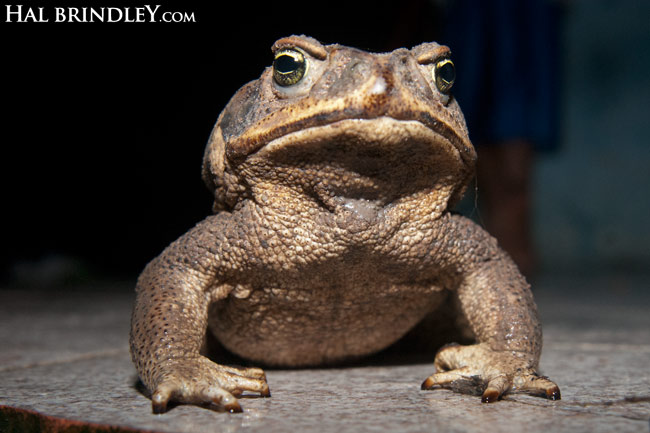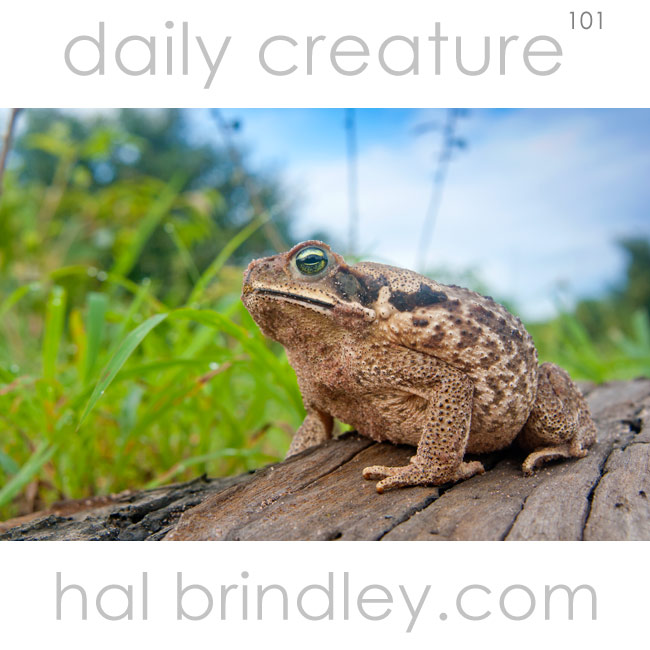Cane Toad
(Rhinella marina)
The Cane Toad is undoubtedly the world’s most infamous amphibian. It is a monstrously large toad, native to Central and South America, but has been introduced to many parts of the world. Average specimens reach about 6 inches, but the Guinness Book of Records lists the largest recorded specimen at fifteen inches long (nose to vent) and 5.8 pounds!

The Cane Toad invasion began when humans decided to use the unwitting toads as pest control. Way back in the 1840’s people began moving Cane Toads from South America to various islands in the Caribbean, where they hoped the toads would consume beetles that were eating sugar cane crops (hence the name Cane Toad.) Sometimes it worked, sometimes it didn’t. But the spread continued and in the 1930’s Cane Toads were introduced across the South Pacific (Hawaii, Fiji & many others) and soon to larger islands (the Phillipines, Japan, Papua New Guinea) and finally, the most devastating of all, Australia.

Since their introduction to Australia’s northeast coast in 1935, the Cane Toad invasion has slowly marched across the country. But the pace is accelerating as toads at the front of the wave become faster and faster each year, traveling further and further each night.
So what’s the big deal about having Cane Toads show up in your yard? 1) Cane Toads have a voracious appetite and consume many native species 2) Cane Toads have toxic glands in their skin which kill native predators when they are consumed. 3) Cane Toads are such efficient eaters they may out-compete native species for food resources.
On top of all that, Cane Toads may even be creating drug problems among Australia’s dogs. Their skin secretes more than just poison (bufotoxin) but also bufotenin, a psychoactive chemical considered a Class 1 drug in Australia. Some pet owners have reported that their dogs are habitually licking Cane Toads to get high!
So should you try licking a Cane Toad? Definitely not. You are far more likely to be killed or severely harmed by the poison than to get high from the small levels of bufotenin.
